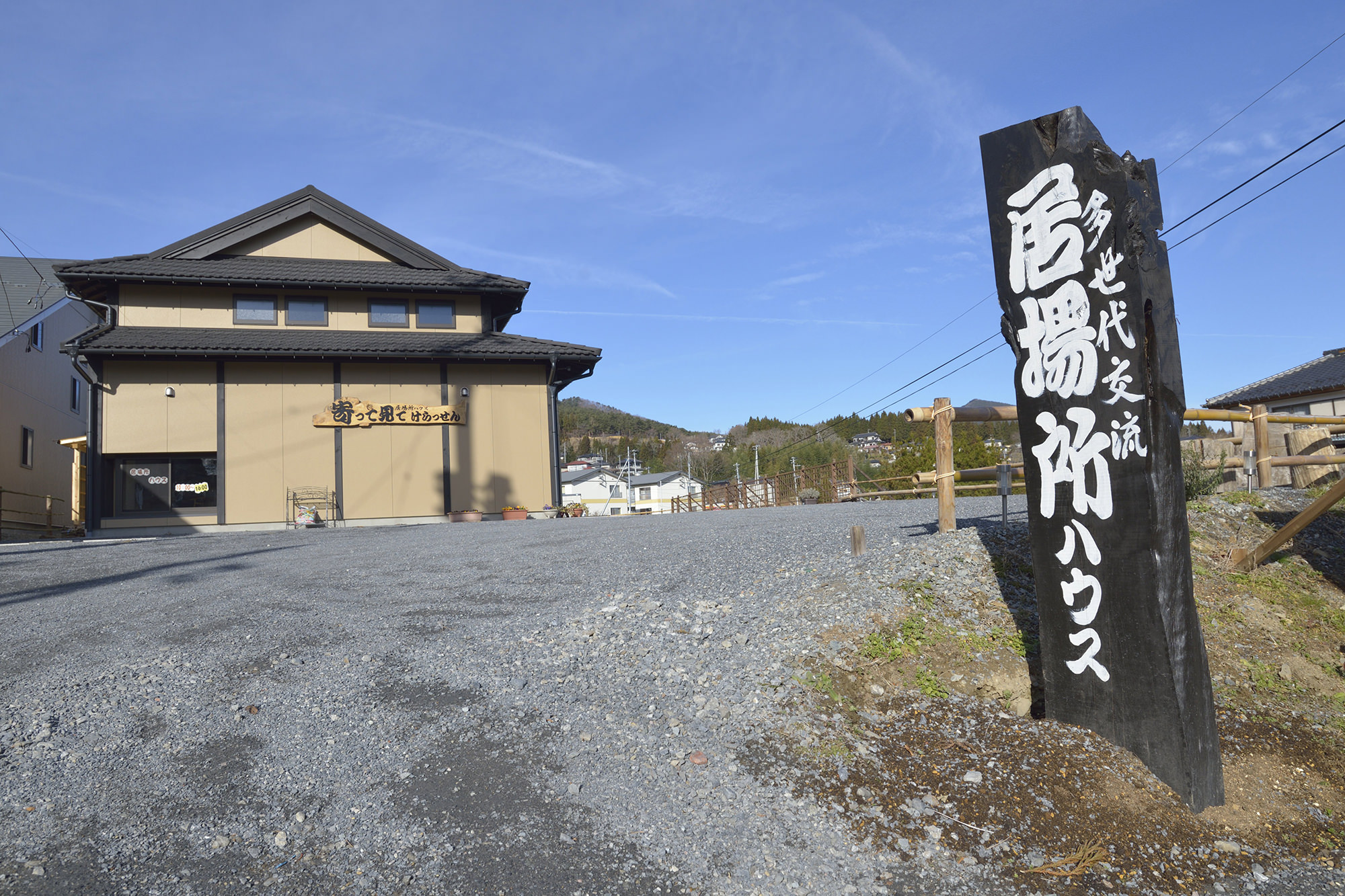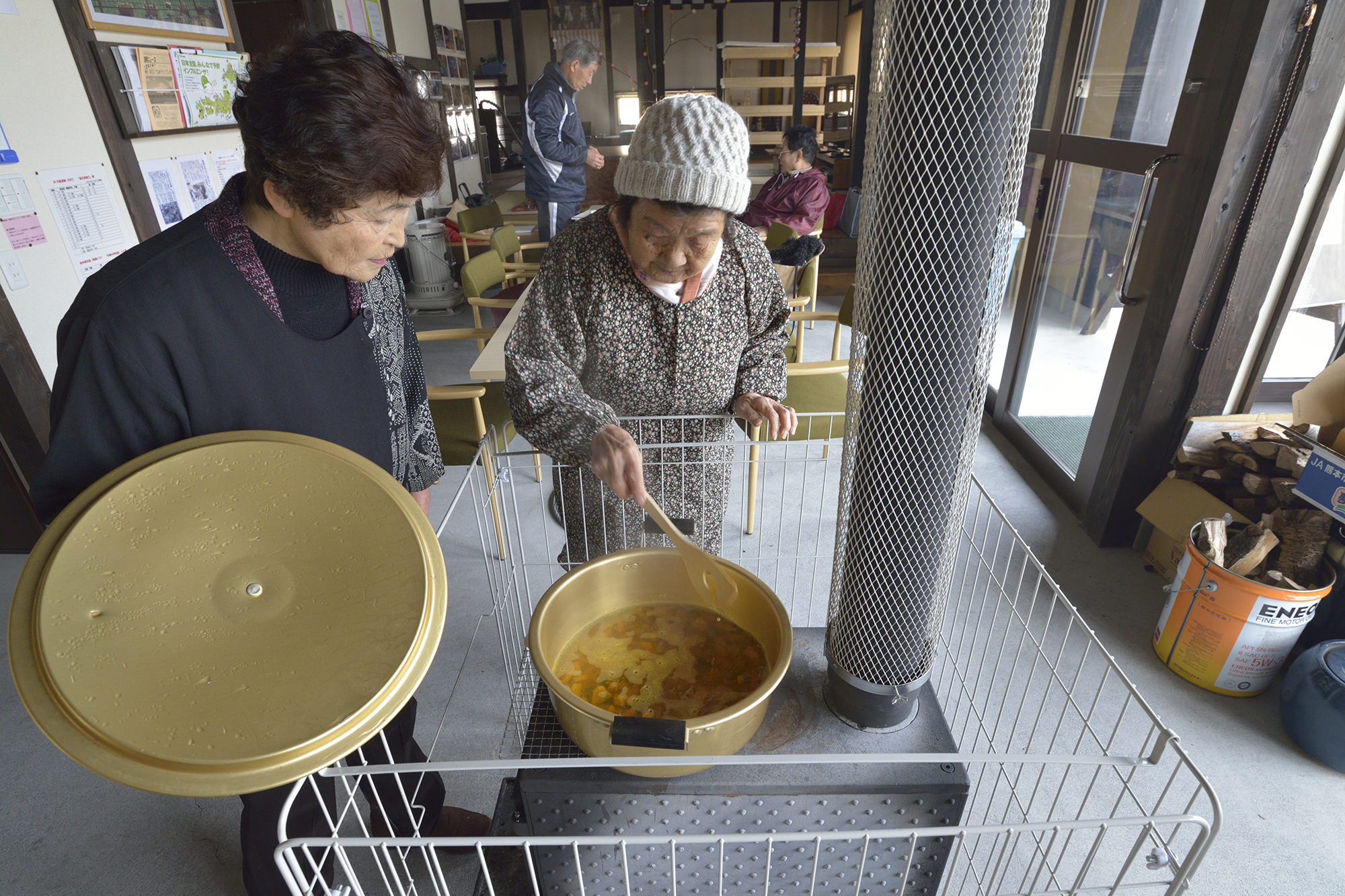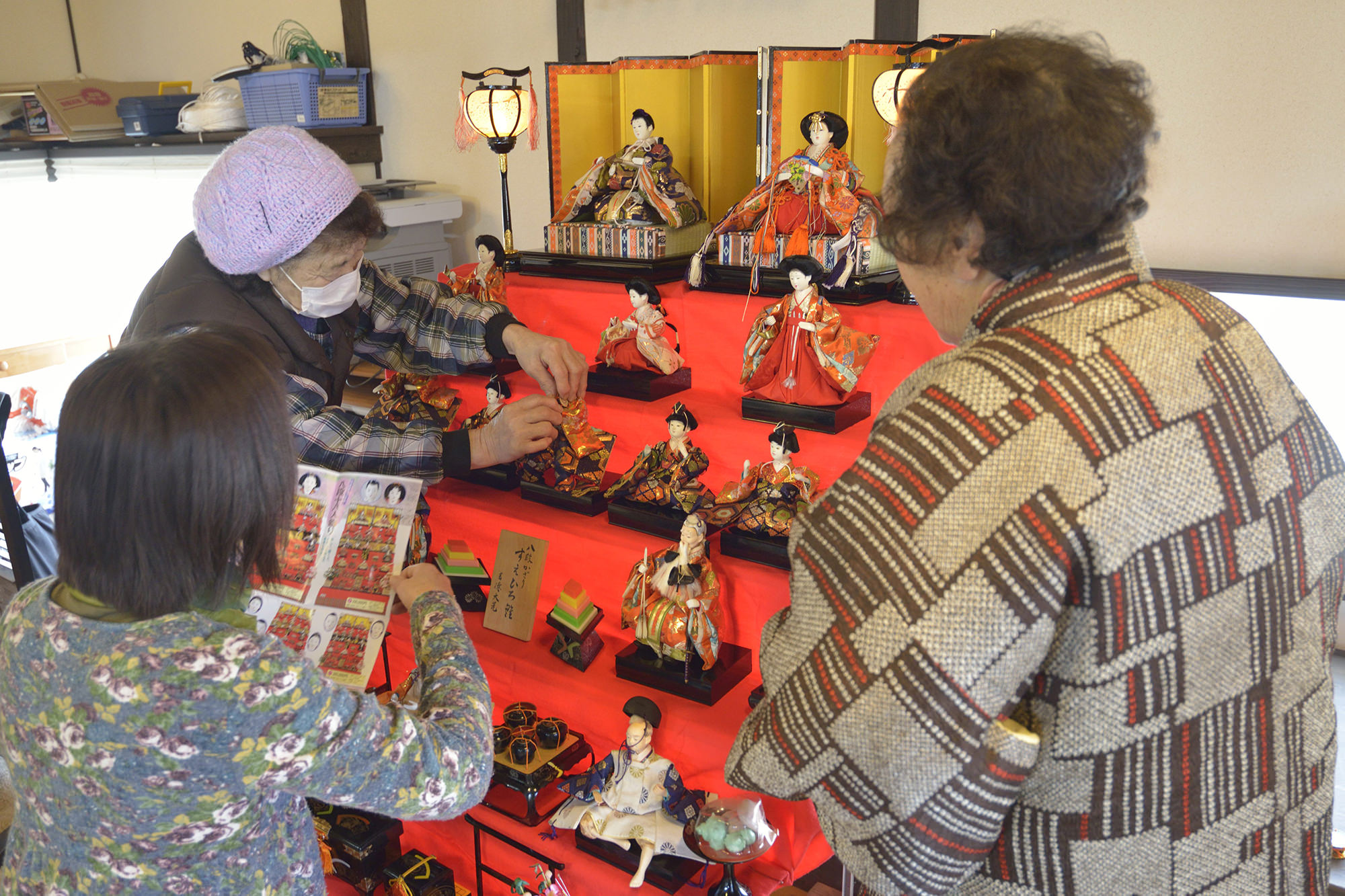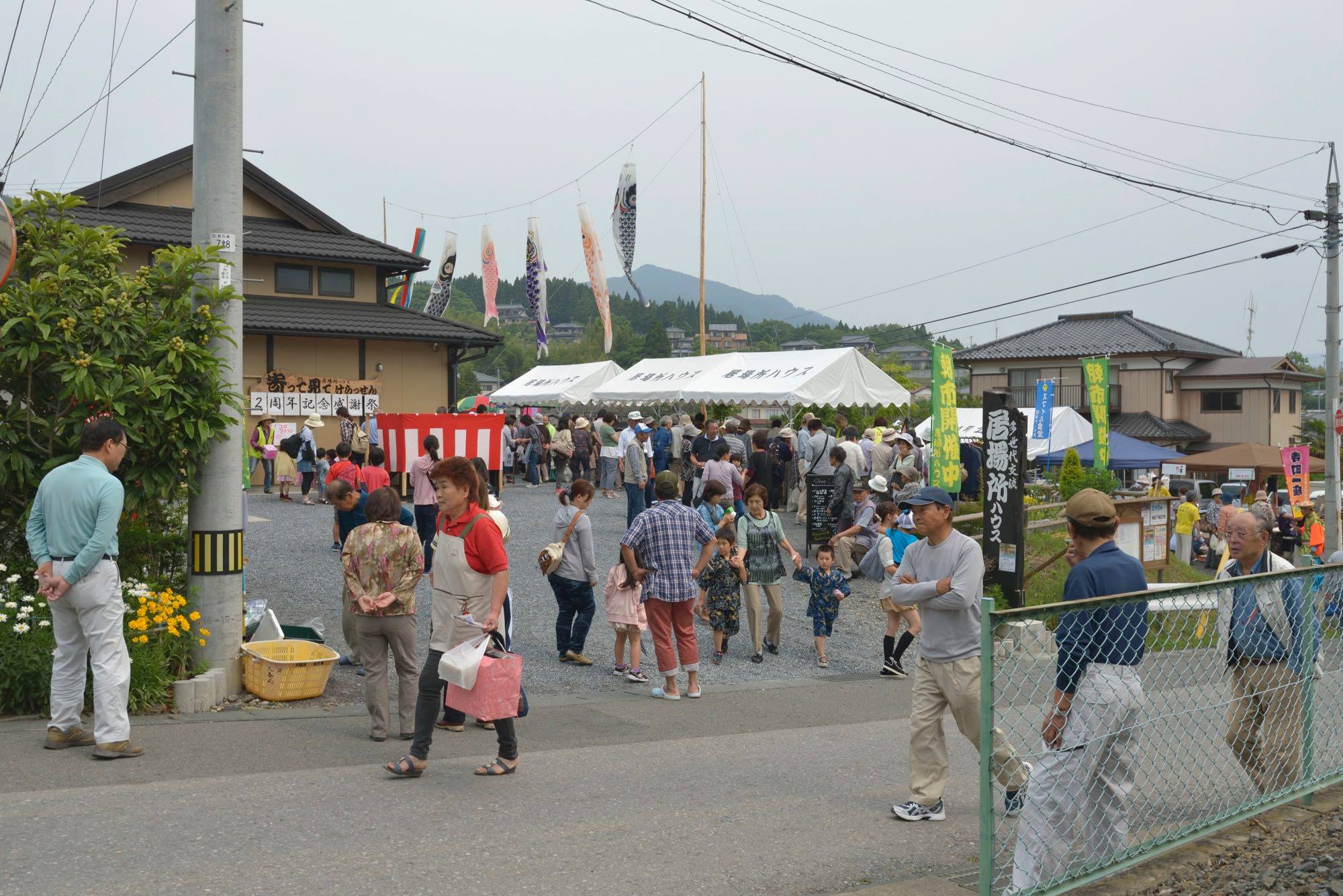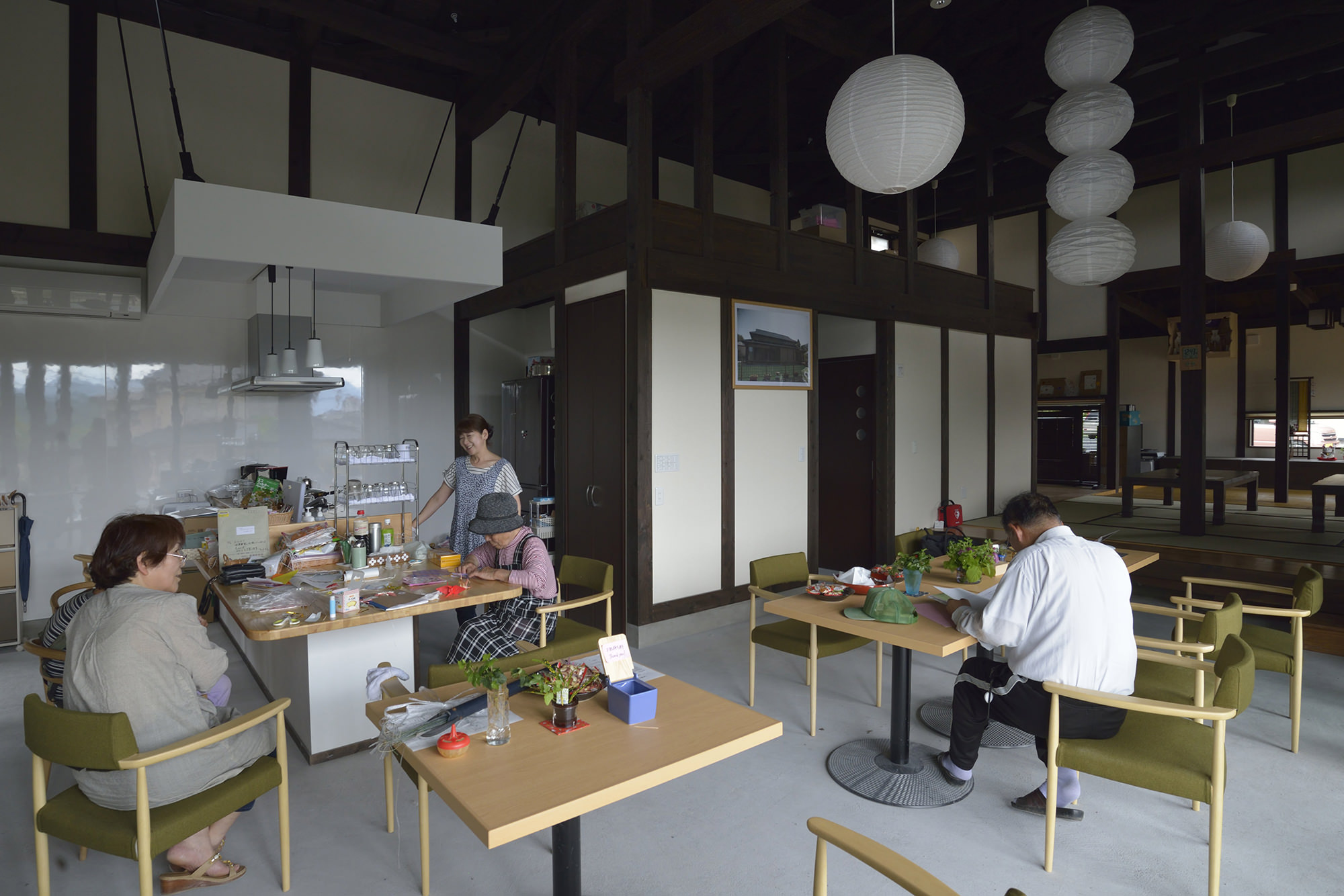Contents
Ibasho House in Japan
“I am thankful that I have been given clothes to wear, food to eat, and a house to live in. However, it is challenging to be on the receiving end for almost a year. I would like to give something back to others, but I don’t know how.”
— Elderly woman in a temporary housing community in Ofunato, Japan, after the tsunami
In 2011, over 18,000 people were killed and more than 65,000 people were displaced when a massive earthquake and tsunami hit northern Japan. Entire communities were devastated. Among the survivors, people spoke of elders who saved younger people’s lives by guiding them to higher ground and teaching them how to survive with extremely limited resources. Older people also received vital aid, for which they expressed a great deal of gratitude. However, many people of all ages found it difficult to be displaced from their homes and communities and dependent on aid to survive. They wanted to be useful to others again, but did not know how to get started. The first Ibasho project was developed in Massaki, Ofunato, Japan in response to their dilemma.
Teams from the non-profit organizations Ibasho and Operation USA visited the affected area to conduct interviews with elderly survivors in temporary community housing. They heard tales of extraordinary courage and hardship, and they registered elders’ strong desire to contribute to the rebuilding of their communities. Inspired by this spirit, Ibasho House was created as a partnership between the community of Ofunato and Ibasho, Operation USA, Hokkaido University, and Honeywell.
With elders actively engaged, Ibasho House in Ofunato has currently been operational for more than six years. Throughout that time, it has been building social capital and resilience while changing people’s attitudes about aging and the social role of elders. Ibasho House has welcomed more than 40,000 people through approximately 1,250 events organized by the local elders. The local nonprofit organization, Ibasho Sozo project, has expanded the scope of the operation from a simple café to include a vegetable garden, a ramen noodle shop, a farmer’s market, a children’s day care, and other multi-generational programs. The knowledge and experience developed among the elders in Japan was then leveraged to help launch Ibasho projects in Nepal and the Philippines.
Challenging Social Perceptions of “Aging”
The Ibasho house challenges perceptions of the role of the elderly in disaster recovery by transforming them from people to be cared for to advocates who help others. At Ibasho, we believe that elders can and should be regarded as valuable resources to our communities. In modern society, older people often become marginalized and lose the ability to contribute to society, while young people lose the wisdom and talents that elders can offer. The Honeywell Ibasho House will benefit not only the elderly survivors of this disaster, but to the respect and dignity of elders in our society as the world faces a global aging phenomenon.
Local elders played an integral role in the design of Honeywell Ibasho House, contributing their wisdom and experience to project and the overall reconstruction process. Even the building itself symbolizes the beauty and resilience of aging: it is an old farmhouse donated by the Ozawa family that was disassembled, moved, and reconstructed as Honeywell Ibasho House by local craftsmen (mostly elders), many of whom suffered their own losses in the tsunami.
Global Cooperation with Local Results
The Honeywell Ibasho House project was initiated in February 2012 with the generous support of Honeywell Hometown Solutions, Operation USA, and Tenjinkai. Many volunteer experts from around the world worked tirelessly with community elders to bring this project to reality in June 2013. The result: a place where the entire community can gather and work together toward recovery. But an Ibasho house is much more than a building. It is a place where elders take a leadership role and serve their entire community, strengthening bonds and building resilience.
Community Ownership
In Ofunato, the Ibasho principles inspired a new sense of community after the tsunami, bringing together people of all ages to make it a reality. Honeywell Ibasho House was built by and for the community in Ofunato. Community members of all ages are engaged in the project, directing it according to their cultural needs and traditions. And this is not a fleeting interest. To ensure long-term sustainability, local elders formed the Ibasho Sozo Project, a not for profit organization that manages the operation of the Honeywell Ibasho House.
The Ibasho Approach
In Ofunato, Ibasho house is an informal place for neighborhood people of all ages to gather and be together.
The Honeywell Ibasho House was built on the Ibasho principles described below. Here, older people will not passively sit and be served. Instead, they actively join in the planning, management and operation of the organization. It is a place where having elders around, participating in discussions and working is a normal part of everyday life. The Ibasho Sozo project also encourages people living with physical disabilities or cognitive illnesses such as dementia are encouraged to participate to their fullest ability. At the Ibasho house, elders are recognized as community assets and a source of history and wisdom to guide younger generations.
Location
Tairabayashi 54-1, Massaki-cho, Ofunato-city, Iwate, Japan
2015 Census Figures for Japan
| Japan | Ofunato City | Massaki Cho | |
|---|---|---|---|
| Population | 127,094,745 | 38,058 | 4,103 |
| Percentage of older population (65yeas and above) | 26.6% | 34.1% | 37.4% |
| Households | 53,448,685 | 14,807 | 1,442 |


